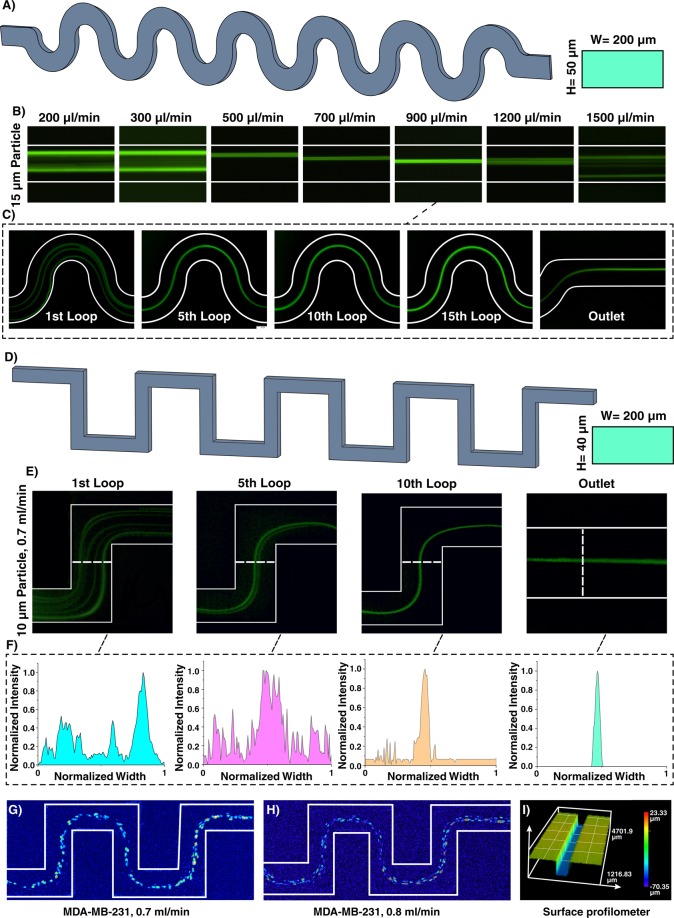Figure 5.
(A) Inertial microfluidics in a curvilinear microchannel with height and width of 50 and 200 µm, respectively. (B) The results show that the equilibrium position of particles depends on the flow rate and has different focusing modes. Particles first focus at two equilibrium positions and then occupy just one focusing line. Eventually, by further increasing the flow rate, Dean drag forces become dominant, resulting in defocusing of particles. The trend is similar to that reported in the literature60. (C) 15 µm particle migration throughout the channel for flow rate of 900 µl/min, demonstrating that particles are focused at the 5th loop. (D) Inertial microfluidics in a serpentine microchannel with height and width of 40 and 200 µm, respectively. The number of lateral positions depends on the applied flow rate at the entrance of the channel. (E) Focusing behavior of 10 µm particles at 0.7 ml/min. (F) As intensity profile elucidates, at the 10th loop, particles reach the stable equilibrium position. Lateral migration of MDA-MB-231 cells at flow rate of (G) 0.7 ml/min and (H) 0.8 ml/min shows a single-line focusing of these cells at the center of the channel. (I) Surface profilometry of the channel with rectangular cross-section with width and height of 200 and 50 µm, which shows the accuracy and high-quality of the channels appropriate for inertial microfluidics.

